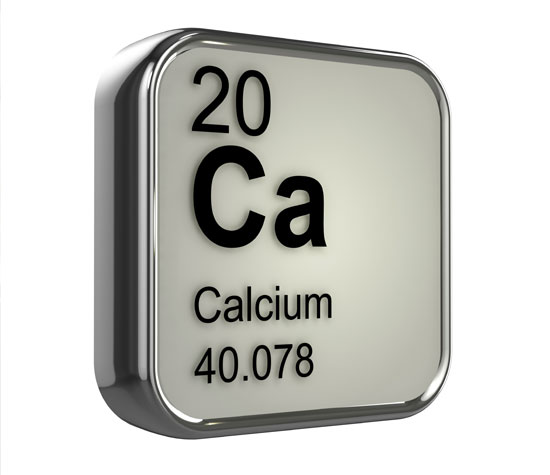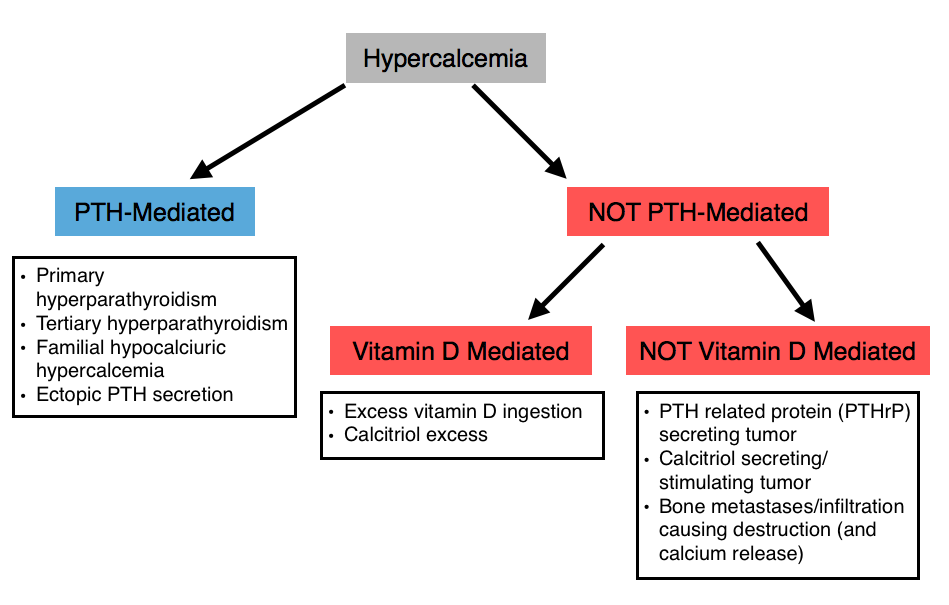Page Contents
WHAT IS IT?
Hypocalcemia refers to high levels of calcium in the serum.

WHAT CAUSES IT?
There are various causes of hypercalcemia that can be organized in the fashion detailed below:

WHAT IS THE INTIAL PRESENTATION FOR THIS CONDITION?
Patient Complaints (Chief Complaints):
- Fatiguability
- Muscle weakness
- Nausea
- Anorexia
- Constipation
Detection On Medical Studies:
- Finding on a BMP/CMP
CLINICAL WORKUP: SERUM STUDIES
WHAT IS OUR THRESHOLD FOR DIAGNOSIS?
THERE IS SOME NUISANCE IN DECIDING IF A PATIENT has hypercalcemia.
Serum levels of calcium:
The reference range for total serum calcium is 8.5-10.5 mg/dL. Using this reference patients with a total serum calcium < 10.5 mg/dL are considered to have hypercalcemia. HOWEVER because much of the serum calcium is protein bound (principally to albumin), the above reference range for total serum calcium assumes that the patient has a normal level of albumin in the serum (~ 4.0 g/dL). For patients who have an abnormal amount of albumin a corrected level of calcium must be used to evaluate for hypercalcemia.
Corrected levels of calcium (relative to albumin):
Each 1 g/dL change in albumin in a patient’s serum will result in ~0.8 mg/dL change in total serum calcium (a decrease in albumin will decrease calcium and vice versa). This is because much of the calcium in the serum is actually bound to albumin. For this reason any patient who is suspected to have a calcium abnormality must also have their albumin levels evaluated. Patients with abnormal albumin levels must have their calcium corrected to accurately assess for hypercalcemia. The below formula can be used (often 4.0 g/dL is used as the normal albumin value):
Calcium = Serumcalcium + 0.8 * (Normalalbumin – Patientalbumin)
Online calculators also exist to make this process easier.
Ionized calcium:
If there is confusion regarding the diagnosis of hypocalcemia, serum ionized calcium (free calcium) can also be measured. It is important to note that the affinity of calcium for albumin is increased in the presence of alkalosis (which will decrease the amount of free calcium present). The reference range for ionized calcium is ~ 4.4-5.4 mg/dL.
HOW DO WE MANAGE A PATIENT WITH THIS DIAGNOSIS?
The treatment of hypercalcemia may vary depending on the etiology of the condition, and is elaborated upon more below:
ARCHIVE OF STANDARDIZED EXAM QUESTIONS
This archive compiles standardized exam questions that relate to this topic.
Page Updated: 01.28.2017